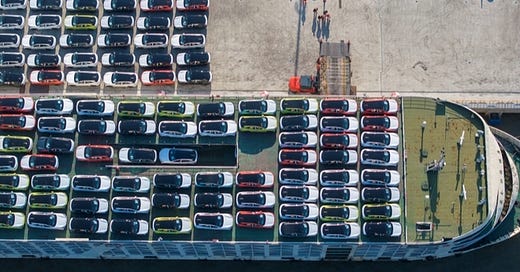How Can China's Electric Vehicle Industry Avoid Isolation Amid Western Trade Blockades?
Chinese NEVs accounted for 24.5% of their total vehicle exports in 2023, with significant overseas market expansion despite geopolitical and trade challenges.
After several rounds of build-up, on May 14, the U.S. government initiated a new round of trade war against China. The measures include an additional 100% tariff on electric vehicles exported from China, bringing the total tariff rate to 102.5%. Senior U.S. government officials stated that the prices of Chinese electric vehicles continue to decline, and only by imposing sufficiently high tariffs can fair competition between the U.S. and China be ensured.
Given the negligible number of electric vehicles China currently exports to the U.S., the new policy carries more symbolic significance than practical impact. Previously, the U.S. has implemented a range of restrictive policies targeting Chinese electric vehicles and their supply chains. For instance, during the U.S.-China trade conflict in 2018, the U.S. announced an additional 25% tariff on cars exported from China.
In 2022, the U.S. introduced the Inflation Reduction Act, proposing a $7,500 tax credit for qualifying electric vehicles. Due to the specific requirements set out by the act, Chinese automakers were excluded from this subsidy. Given the high barriers to entry in the U.S. market, Chinese car companies have seen a rapid increase in overseas expansion in the past two years, yet they have "actively" avoided the U.S.
[30% Off, and Save Now💴]
Keep reading with a 7-day free trial
Subscribe to Caixin Global China Watch to keep reading this post and get 7 days of free access to the full post archives.




